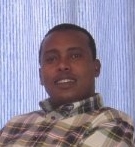Aligning with earmarked grants for fighting large scale epidemics in fragile contexts, more efforts and strategies are needed. They should come together and act in unison to address the spectrum of challenges these scourges pose to precarious systems

By Daniele Dionisio*
Policies for Equitable Access to Health (PEAH)
What Ebola has Taught Us to Counter Mismanagement of Epidemic Outbreaks
An Ebola outbreak of unprecedented scale broke out in Guinea in December 2013 and swiftly spread into Liberia and Sierra Leone totalling about 28,637 reported cases with 11,315 deaths – probable, confirmed and suspected – over a two-year almost uninterrupted course.
An now that the ravaged countries seemingly got rid of Ebola from mid-January 2016, staying at zero cases is hardly to be hoped for with the load of yet unsolved system gaps paving the way for Ebola reappearance.
Ineffective Policies
These countries are home, indeed, to precarious health systems, deep rates of illiteracy, poverty, social unrest, low-level trust in the governments and huge population mobility across wide-mesh boundaries. These add to weakness of infrastructure, logistics, health information, surveillance, drug supply and governance systems, together with shortage of well-trained health workers and inadequate organization and functioning of health facilities.
Not to mention that laboratory services, maintenance of vital statistics and disease surveillance and monitoring are underfinanced in these countries, and fundraising was late and insufficient during the whole Ebola outbreak.
This adds to evidence that WHO has fallen short of its mandate to stop Ebola spread mainly because the agency was slow to mount a response early .
Moreover, while the hit countries had no background tackling Ebola and no basic implementation of the international health regulations to curb epidemics, the African actors (like WHO Afro and involved country offices) did, as reported, a rather small and late job in terms of agenda setting.
Worse, since the incentives of current patent system are driven by profits, the lower-income countries lacking lucrative markets are all the more discriminated as regards the development of lifesaving medicines for neglected health scourges.
This may explain the lack of effective treatments and vaccines at the beginning of last epidemic in spite of a 50% average case fatality rate of previous Ebola outbreaks in Africa.
Hence, the just over Ebola crisis has largely depended on the shortcomings above as a reflection of the failure of global health policies to stop inequalities of access to lifesaving treatments and care.
And now that just rolled out effective drugs and vaccines allow treatments and preventive vaccination campaigns to be finally within grasp, manufacturers are to be held accountable for making end products fully affordable and available in the needed quantities, while ensuring that distribution is driven by needs, irrespective of where people live or the capacity of a country to pay. As such, excess vaccine doses for unexpected needs and stockpiling for timely response to future Ebola outbreaks are required.
Earmarked Grants as a Priority
Needless to say, things would be far better if outbreak contingency funding sources had already been at hand as an incentive to bring producers into developing the necessary drugs and vaccines.
That’s why a forward-looking call by the World Bank president should definitely be put in motion “…The world should come together to fund a permanent pool of money earmarked for fighting pandemics like Ebola… a mechanism like this could protect the global economy from the potential downside risk and the shock of another epidemic”.
While depending on commitment of governments and institutions (BRICS Bank, African Development Bank, International Monetary Fund, World Bank and International Finance Facility for Immunization, among others), an outbreak contingency fund would work as a callable capital at once for automatic disbursement whenever needed.
Drastic Changes on Agenda
Adding to earmarked grants as just highlighted, more efforts and strategies are needed. They should come together and act in unison to address the challenges that large scale epidemics pose to precarious systems.
This involves preventing outbreaks by early warning systems as a cost-effective strategy to timely discover and contain transmissible diseases. As would be the case for an “active case detection” approach based on mobile workers tasked with testing everyone in the population several times a year at their residence places.
Looking for this, a stronger WHO leadership cannot be given up. Hence, it is good news that the Agency just entered shake-up to effectively “…enable countries to strengthen their outbreak and emergency preparedness, while ensuring that its own experts and those of its partners can rapidly roll out the required response within the first 24–72 hours… and… subsequently, to …support countries in the recovery phase after an outbreak or emergency and help them “build back better” when health systems have been damaged …”
In such connection, adequate support, collaboration and funding by the member States would be instrumental to WHO good performance in outbreaks monitoring and response.
To these aims, multi-sector engagement is needed as well to induce governments to bring U-Turn changes into effect by measures that include:
-Seeking synergies and coordination among global level institutions and humanitarian funding agencies while avoiding overlapping and fragmentation.
-Ensuring that leading institutions and organizations enhance working with health ministries to strengthen national systems, invest in infrastructures and improve transparency and accountability including by multi-sector participatory models.
-Reversing “brain drain”, health worker shortage by a transformation of the training approach, as to adapt curricula to local needs, promote strategies to retain expert faculty staff, expose trainees to community needs during training, promote multi-sector approach to education reforms, and strengthen links between the educational and health care delivery system.
-Ensuring that revenues from a Financial Transaction Tax (FTT), whose approval is in progress in Europe, will substantially be committed to development and for the fight against health scourges, diseases of the poor and epidemics.
Overall, the final success of this framework will depend on weak country governments’ leadership, commitment and accountability while partnering with administrations in wealthy countries, international institutions and organizations to implement a coordinated response to sustainably rebuild and strengthen health systems, the economy, agricultural and food security sectors, access to education, and trust and community empowerment.
Relevantly, it is good premise that Guinea, Liberia and Sierra Leone entered expenses in the budgets last year to rebuild their health systems and provide services through the end of December, 2017.
————————————————–
*Daniele Dionisio is a member of the European Parliament Working Group on Innovation, Access to Medicines and Poverty-Related Diseases. He is an advisor for “Medicines for the Developing Countries” for the Italian Society for Infectious and Tropical Diseases (SIMIT), and former director of the Infectious Disease Division at the Pistoia City Hospital (Italy). Dionisio is Head of the research project PEAH – Policies for Equitable Access to Health. He may be reached at d.dionisio@tiscali.it https://twitter.com/DanieleDionisio





